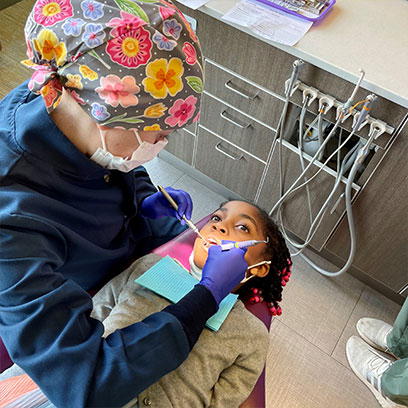Space Maintenance
If your child’s tooth has come out too soon because of infection, decay or trauma, it is important to maintain the space to prevent future space loss and dental problems when permanent teeth begin to come in. Without the use of a space maintainer, the teeth that surround the open space can shift, crowding the permanent tooth’s eruption. When that happens, the need for braces or other orthodontic treatment may become greater.
Types of Space Maintainers
A band-and-loop maintainer is made of stainless steel wire and held in place by a cemented band on the tooth adjacent to the empty space. The wire is attached to the band and rests against the side of the tooth on the other end of the space preventing the teeth from shifting.
A lingual arch is used on the lower teeth when the back teeth on both sides of the jaw are lost. A wire is placed on the lingual (tongue) side of the arch and is attached with cemented bands on two back teeth. This prevents the front teeth from shifting backwards into the gap.
In the case of a lost second primary molar prior to the eruption of the first permanent molar, a distal shoe may be recommended. Because the first permanent molar has not come in yet, there is no tooth to hold a band-and-loop space maintainer in place. A distal shoe appliance has a metal wire that is inserted slightly under the gum and will prevent the space from closing.
Caring for Your Child’s Space Maintainer
There are four general rules for taking care of your child’s appliance.
- Your child should avoid sticky foods, including candy and chewing gum.
- Encourage your child not to push or tug on the space maintainer with the fingers or tongue.
- Keep your child’s space maintainer clean through effective brushing and flossing.
- Your child should continue to see the pediatric dentist for regular dental visits.





